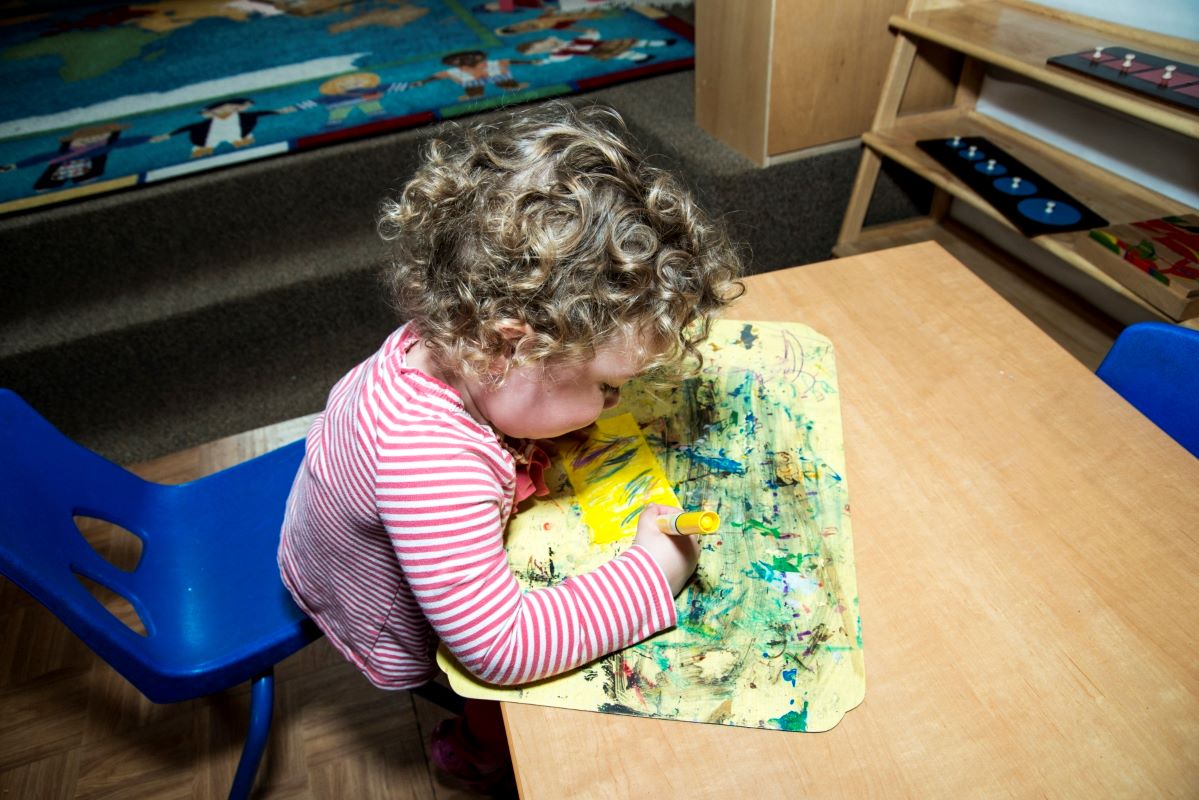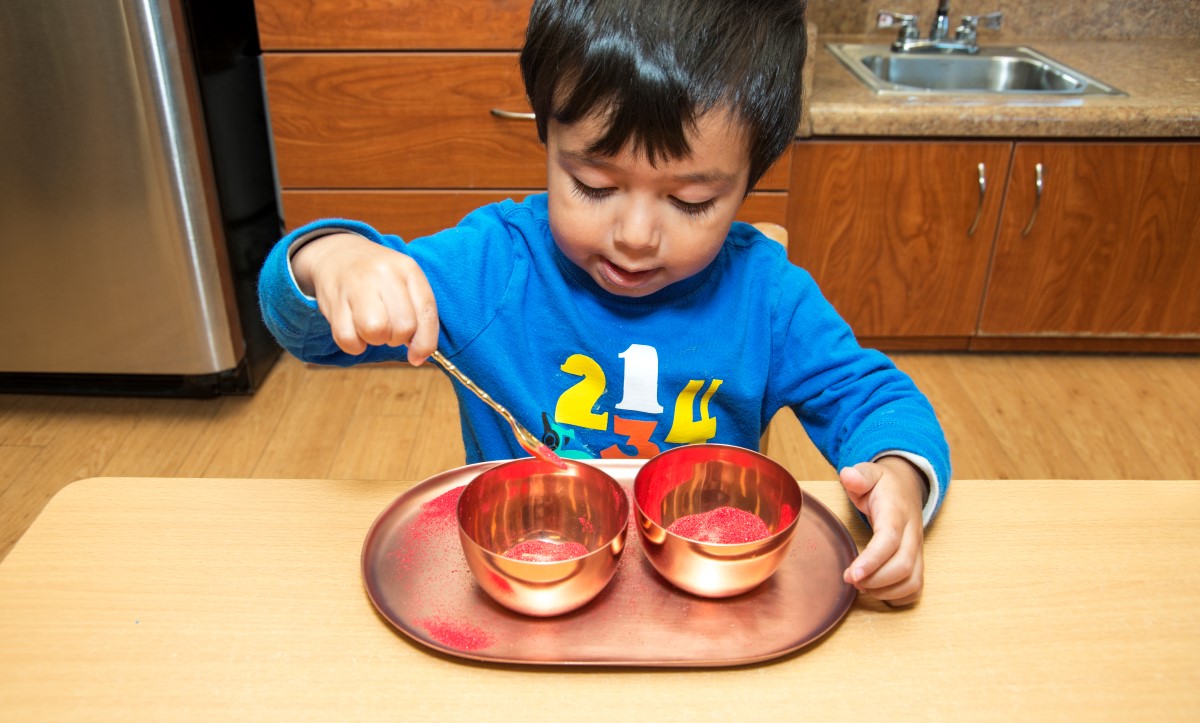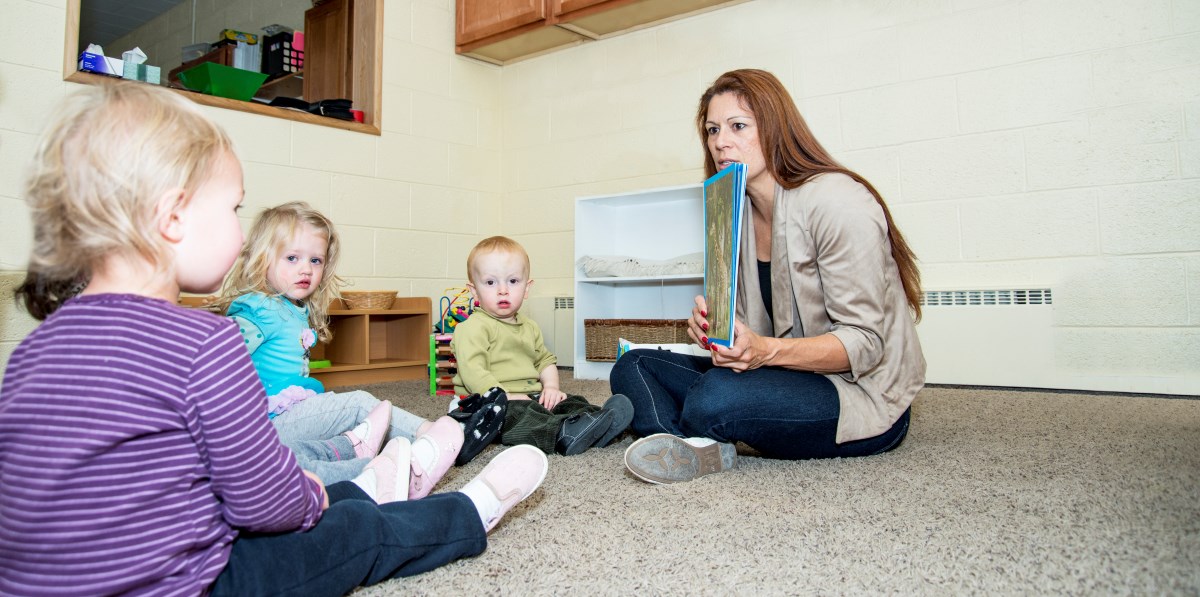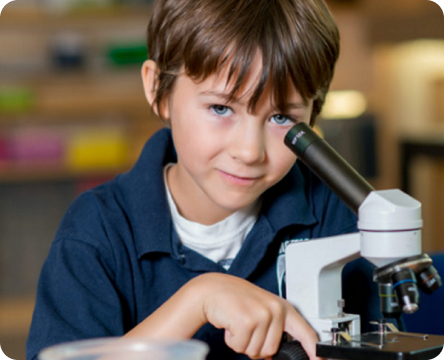Montessori Toddler Program | Denver
Our Montessori toddler program creates a nurturing bridge between home and school, setting your child on a path to lifelong learning through our thoughtfully designed Montessori classroom environment.
Montessori Toddler Program Enrollment
Ages Served
15 - 36 Months
Schedule Options
Half-day and full-day programs available with part-time schedules
Hours
8:00 AM - 3:00 PM (full day), 8:00 AM - 12:00 PM (half day)
Is Potty Training Required?
No, we support your child's natural development process
Curriculum Focus
Practical life skills, language development, and independence through hands-on activities
Daily Routine
Morning work cycle, circle time, outdoor exploration, community lunch, and rest time
Classroom Experience
Mixed-age environment with specialized learning materials and Montessori classroom design
About Our Montessori Toddler Program
Our Montessori school approach for toddlers recognizes these early years as a critical time for development. We provide quality child care that goes beyond traditional daycare, offering an environment where each human being can develop independence, language skills, and confidence. Our experienced educators understand that toddlers need guidance rather than directives to build their foundational selves, creating a thriving community where families feel supported in their child's growth.
From 15 Months to 3 Years: Development Support for Every Stage
During this transformative period, your child transitions from a dependent infant to an independent toddler ready for preschool. Our Montessori environment supports this natural development through carefully prepared learning materials and classroom design that meets the needs of growing children. Whether your family needs full-time child care or part-time education, our program adapts to support working parents while maintaining the authentic Montessori approach that has guided children for over a century.
Montessori Toddler Program Enrollment and Registration
Ready to join our Montessori school community? Enrollment begins with understanding your family's needs and your child's developmental stage. We welcome families throughout the year as space becomes available, and our admissions team works closely with parents to ensure a smooth transition into our Montessori classroom environment. Contact us to begin the enrollment process and learn more about how our program supports your toddler's natural development.
Why Families Trust Montessori Children's House of Denver in Denver
For decades, families across Denver have chosen our Montessori school for its commitment to authentic education and child care excellence. Our teachers receive specialized training in Maria Montessori's methods, ensuring your child experiences the full benefits of this proven approach. Families appreciate our calendar of events that builds community connections, from seasonal celebrations to parent education workshops that support the whole family. Join our open house to experience our environment firsthand and see why parents trust us with their most precious gifts.
A Private Montessori School Serving Denver
Discover how our Montessori approach can make a lasting difference in your child's life. Contact us today to learn more, schedule a tour, and become part of our vibrant school community.
Other Montessori Programs Available at Our Locations
After completing our toddler program, children naturally progress to our primary program where they continue building independence while preparing for elementary education through advanced practical life work and academic materials.
Our lower elementary program extends the Montessori philosophy into the elementary years, offering children the freedom to explore cosmic education while developing critical thinking skills.
The upper elementary program prepares students for middle school through advanced academic work and leadership opportunities within our Montessori community.
Other Montessori Programs Available at Our Locations
After completing our toddler program, children naturally progress to our primary program where they continue building independence while preparing for elementary education through advanced practical life work and academic materials.
Our lower elementary program extends the Montessori philosophy into the elementary years, offering children the freedom to explore cosmic education while developing critical thinking skills.
The upper elementary program prepares students for middle school through advanced academic work and leadership opportunities within our Montessori community.
Parent Reviews
Meredith B.
January 21, 2025
Communicative and caring teachers and leadership and small classroom/school size contributing to true community feel.
Stefanie S.
June 18, 2024
I love that the staff creates such a safe space for both the kids and parents to be themselves. They are all so welcoming and open and extremely knowledgeable in childhood education. They have helped me and my family overcomes some of the hurdles that toddlerhood brings and develop positive approaches to difficult situations. We love MCHD!
The Toddler Experience: Development Through Discovery
Meet the Child - Early Childhood Development
During their first three years, your child experiences tremendous growth, unconsciously absorbing every aspect of their experiences. They accomplish the remarkable task of transitioning from a helpless infant to a walking, talking, capable human being. Our Montessori environment offers opportunities for children to reach their full physical, linguistic, and social potential while preparing for the academic work that awaits them.
Areas of Development:
- Coordination of fine and gross motor skills
- Emergence of language and communication skills
- Lengthening periods of concentration
- Strong sense of order that builds the mathematical mind
- Independence and developing individuality
The Montessori Toddler Curriculum
Our Montessori classroom curriculum connects to the concrete world around us, offering opportunities for self-care and environmental care alongside vocabulary development. On any given day, you might observe toddlers scrubbing tables, sweeping floors, watering plants, practicing vocabulary with objects, dressing themselves, or preparing snacks. These purposeful tasks build self-pride that comes from internal awareness rather than external praise.
Visitors to our Montessori environment often comment on how peaceful and calm the children appear. When we provide an environment that speaks to developing needs, children feel satisfied and have no desire to engage in resistant behavior. Our educators offer gentle guidance and choices, helping toddler students feel ownership over their experiences while encouraging independence.
Curriculum Areas:
- Language: Vocabulary building through concrete experiences and storytelling
- Pre-Math: Sensorial experiences that build mathematical understanding
- Culture/Geography: Exploration of the world through maps, cultures, and traditions
- Practical Life: Real work that builds independence and life skills
Social Emotional Development in Our Montessori Environment
During the first three years of life, toddlers absorb social interactions as adults model empathy, conflict resolution, manners, and self-regulation techniques. Children typically won't display these skills until around age 4, so aware adults understand that toddlers need to observe these behaviors without pressure to immediately replicate them.
Toddlers engage in parallel play, focusing more on their own needs rather than others'. Children often work beside each other with minimal conversation, entirely focused on their individual tasks. This developmental stage explains why conflicts arise, as toddlers don't yet understand abstract concepts like "waiting" or possess the language to express desires to peers.
Our teachers manage conflicts with gentle language, labeling emotions before using redirection. Many classrooms feature peace corners where children can choose quiet self-regulation, sometimes with teacher guidance. Indicators that a toddler prepares to move into our primary environment include increased social connections, displays of empathy, seeking to work with others, and emulating adults.
Physical Development Through Purposeful Movement
During this period of rapid growth, toddlers practice coordinating movements to gain balance, confidence, and strength. Our Montessori classroom provides every opportunity to enhance gross motor and fine motor skills through meaningful work.
Many practical life materials offer full body movement opportunities like sweeping, carrying heavy objects such as water pitchers, and large arm movements like window cleaning. These activities satisfy both physical needs and the desire for purposeful work.
Fine motor skills develop through materials like clay work, painting with fine brushes, scissor use, and bead threading. These activities strengthen hands and build control, preparing for future handwriting. Freedom to practice and master motor skills builds concentration and confidence, preparing children for their next academic environment.
The Prepared Montessori Classroom Environment
We refer to the space as "the child's classroom" because teachers prepare the environment then give it to children for their use. Each Montessori classroom receives thoughtful preparation to meet every child's developmental needs.
Environmental Features:
- Open layout with low shelves, chairs, and tables for easy material access and movement freedom
- Appropriately-sized materials for toddler hands and bodies promoting success
- Consistent areas and routines helping young children orient easily
- Organized shelves allowing toddlers to focus on options and make material choices
- Natural light, living plants and animals, wooden materials creating peaceful, home-like atmosphere
- Peace corners for self-regulation support
- Toddler-sized bathrooms promoting successful toileting and self-care
Daily Schedule at Our Montessori School
7:30-8:00 - Before care for working families
8:00-10:00 - Morning work cycle: Individual lessons, free engagement with learning materials, snack, toileting
10:00-10:30 - Morning circle time with music and group lessons, transitioning outdoors
10:30-11:30 - Playground time and daily neighborhood walks exploring our Denver community
11:30-12:00 - Community lunch with individual meals from home (half-day students depart)
12:30-3:00 - Nap time and afternoon work cycle (full-day students depart at 3:00)
3:00-6:00 - Aftercare program for families needing extended child care
While toddlers enjoy freedom during work cycles to choose tasks and repeat activities for mastery, this freedom exists within limits. Teachers carefully curate available materials and guide students through individual and group lessons. Over time in the Montessori classroom, each toddler works with and masters all available materials.
Note: We use the term "work" deliberately in our Montessori environment to honor the great effort children invest. For young children, this often appears as "play" because the effort brings joy and feels natural rather than forced.
FAQs
Our Montessori school approach focuses on fostering independence and natural development rather than simply providing child care. Children engage with specially designed learning materials in a prepared Montessori environment that supports their developmental needs while building practical life skills.
Schedule a Tour!
Discover how our Montessori educational approach can make a lasting difference in your child's life. Contact us today to learn more, schedule a tour, and become part of our vibrant school community.











